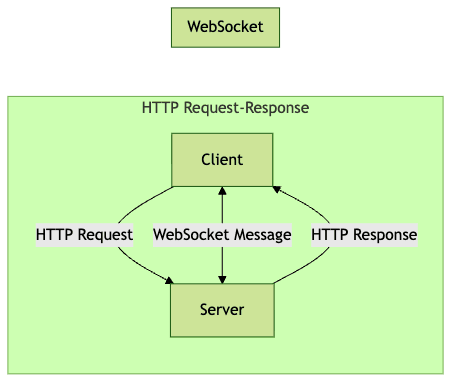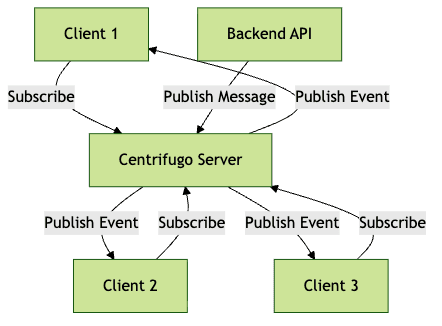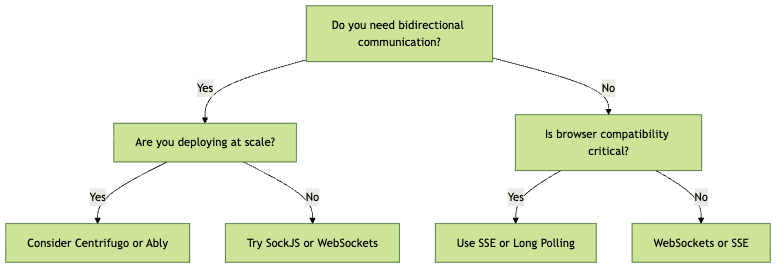Introduction to WebSocket Alternatives
In 2025, real-time web applications are integral to delivering responsive user experiences, enabling features like live chat, collaborative editing, and instant notifications. Traditionally, WebSockets have been the go-to solution for bidirectional real-time communication. However, developers increasingly seek WebSocket alternatives to address challenges related to scalability, security, compatibility, and network infrastructure constraints. This post explores a range of WebSocket alternatives—such as Server-Sent Events (SSE), long polling, SockJS, Centrifugo, and managed services like Ably—to help you select the right tool for your next real-time project.
Understanding WebSockets: Strengths and Limitations
What Are WebSockets?
WebSockets provide a full-duplex communication channel over a single TCP connection, enabling persistent two-way communication between client and server. Unlike HTTP's request-response model, WebSockets allow servers to push data to clients instantly, making them ideal for real-time applications. They start with an HTTP handshake, then upgrade to the WebSocket protocol, maintaining an open connection for ongoing message exchange.
Common Use Cases for WebSockets
WebSockets are popular in chat applications, multiplayer games, collaborative editing platforms, financial tickers, and live dashboards—any scenario requiring low-latency, real-time data exchange. For those building video communication platforms, leveraging a
Video Calling API
can streamline the integration of real-time video and audio features, providing a robust alternative to building from scratch.Limitations of WebSockets
Despite their power, WebSockets have limitations:
- Compression and Multiplexing: Native WebSocket lacks HTTP/2-level multiplexing and advanced compression, potentially impacting performance.
- Proxies and Firewalls: Some network intermediaries block or disrupt WebSocket traffic, causing reliability issues.
- Security: WebSockets require explicit security measures (e.g., WSS, authentication) and may be more vulnerable to certain attacks compared to HTTP.

Criteria for Choosing WebSocket Alternatives
Selecting the right real-time protocol requires evaluating several factors:
- Scalability: Can the protocol handle thousands or millions of concurrent connections efficiently?
- Compatibility: Does it work across all major browsers, devices, and proxies?
- Security: Does it support robust authentication, encryption, and defense against common vulnerabilities?
- Ease of Implementation: Are there reliable libraries, SDKs, and clear documentation?
Assessing these criteria ensures you choose a WebSocket alternative that aligns with your technical requirements and organizational needs. For developers working with cross-platform frameworks, exploring
flutter webrtc
can be beneficial for building real-time communication apps on both Android and iOS.Popular WebSocket Alternatives
1. Server-Sent Events (SSE)
Server-Sent Events (SSE) provide a straightforward way for servers to push real-time updates to the browser over a single HTTP connection. Unlike WebSockets, SSE is unidirectional: the server can send data to the client, but not vice versa. SSE uses standard HTTP and is supported natively in most modern browsers.
How SSE Works
SSE leverages a persistent HTTP connection. The client initiates a request, and the server responds with a special
text/event-stream content type. The server can then stream updates as events to the client without closing the connection.Ideal Use Cases
SSE is excellent for live feeds, notifications, real-time analytics dashboards, and any scenario where the client only needs to receive updates from the server. If you're looking for a
jitsi alternative
for video conferencing with real-time updates, exploring modern APIs and SDKs can provide enhanced flexibility and features.| Feature | SSE | WebSockets |
|---|---|---|
| Directionality | Server \u2192 Client | Bidirectional |
| Transport | HTTP | Custom TCP protocol |
| Browser Support | Good (except IE) | Excellent |
| Complexity | Low | Moderate |
| Proxy Friendly | Yes | Sometimes |
Code Snippet: Simple SSE Implementation
Backend (Node.js/Express):
```javascript
const express = require("express");
const app = express();
app.get("/events", (req, res) => {
res.setHeader("Content-Type", "text/event-stream");
res.setHeader("Cache-Control", "no-cache");
res.setHeader("Connection", "keep-alive");
setInterval(() => {
res.write(
data: {\"time\": \"${new Date().toISOString()}\"}\n\n);
}, 2000);
});app.listen(3000);
```
Frontend (HTML/JS):
html
<script>
const evtSource = new EventSource("/events");
evtSource.onmessage = (e) => {
console.log("Received:", e.data);
};
</script>2. Long Polling
Long polling is a WebSocket alternative that emulates real-time updates over HTTP. The client sends a request to the server and waits for a response. If no data is available, the server holds the request open until data becomes available or a timeout occurs. The client immediately re-requests upon receiving a response, creating a near-real-time effect.
When to Use Long Polling
Long polling is best suited for environments where proxies or firewalls block WebSockets or SSE, or when legacy browser compatibility is necessary. For mobile developers,
webrtc android
offers a powerful way to implement real-time communication on Android devices, overcoming many of the limitations of traditional polling techniques.Pros and Cons
- Pros: Broad compatibility, simple to implement, works through most proxies.
- Cons: Higher latency, increased server load, less efficient for high-frequency updates.
Code Snippet: Long Polling Example
1// Client-side (browser)
2function poll() {
3 fetch("/long-poll")
4 .then(response => response.json())
5 .then(data => {
6 console.log("Received:", data);
7 poll();
8 });
9}
10poll();
11
12// Server-side (Node.js/Express)
13app.get("/long-poll", (req, res) => {
14 setTimeout(() => {
15 res.json({ time: new Date().toISOString() });
16 }, Math.random() * 2000);
17});
183. SockJS
SockJS is a browser JavaScript library that provides a WebSocket-like API, but with transparent fallback to various transport protocols when WebSockets are unavailable. It ensures real-time communication works reliably across browsers and network conditions. If you're searching for
livekit alternatives
, SockJS and similar solutions can offer the flexibility and reliability needed for scalable real-time applications.Features and Fallback Mechanisms
- Supports WebSockets, XHR streaming, XHR polling, iframe transport, etc.
- Handles cross-domain, CORS, and reverse proxy issues.
- Ensures seamless experience in environments where WebSockets are blocked.
Example Code: SockJS Usage
1// Client-side
2import SockJS from "sockjs-client";
3const sock = new SockJS("/sockjs");
4sock.onopen = () => console.log("SockJS connected");
5sock.onmessage = (e) => console.log("Message:", e.data);
6sock.onclose = () => console.log("SockJS disconnected");
74. Centrifugo
Centrifugo is an open-source, scalable real-time messaging server based on pub/sub principles. It supports multiple transports (WebSocket, SSE, HTTP-streaming) and is designed for high availability and enterprise deployments. For developers building communication features, using a
javascript video and audio calling sdk
can accelerate development and ensure compatibility with modern browsers.Architecture and Pub/Sub Messaging
Centrifugo decouples real-time messaging from your main application, using publish/subscribe channels to broadcast events to many clients efficiently. It integrates with authentication and can be horizontally scaled.
Scalability and Enterprise Suitability
- Handles millions of connections with ease
- Offers authentication, JWT support, presence, history, and scalable clustering
- Suitable for complex, high-scale environments and hybrid cloud deployments

5. Ably and Managed Real-Time Services
Managed real-time platforms like Ably abstract away the operational complexity of scalable real-time infrastructure. These platforms offer APIs, SDKs, and enterprise-grade features as a service. If you need to implement large-scale broadcasts or interactive sessions, a
Live Streaming API SDK
can provide the necessary tools for seamless live streaming experiences.What Are Managed Real-Time Platforms?
They handle connection management, global scaling, reliability, security, message history, and fallback mechanisms out of the box. Developers integrate with simple APIs, focusing on application logic rather than infrastructure. Additionally, if your use case involves telephony, integrating a
phone call api
can enable real-time audio communication directly within your applications.Ably Overview and Features
- Global edge infrastructure for ultra-low latency
- Multiprotocol support (WebSocket, SSE, MQTT)
- Advanced pub/sub, presence, history, message ordering, and QoS
- Compliance, SLAs, and 24/7 monitoring for enterprise needs
When to Consider Managed Services
Choose managed real-time services when:
- You need to scale globally without infrastructure headaches
- Enterprise compliance, SLAs, or uptime guarantees are required
- You prefer to focus on product features over DevOps
Comparison Table: WebSocket Alternatives
| Solution | Directionality | Scalability | Browser Support | Fallbacks | Ease of Use |
|---|---|---|---|---|---|
| WebSockets | Bidirectional | High | Excellent | No | Moderate |
| SSE | Server \u2192 Client | Medium | Good | No | Easy |
| Long Polling | Server \u2192 Client | Low | Excellent | No | Easy |
| SockJS | Bidirectional | Medium | Excellent | Yes | Easy |
| Centrifugo | Bidirectional | Very High | Excellent | Yes | Moderate |
| Ably | Bidirectional | Very High | Excellent | Yes | Easy |
Choosing the Right Alternative: Decision Guide

Conclusion: The Future of Real-Time Communication
WebSocket alternatives are thriving in 2025, offering robust, scalable, and secure real-time solutions for every use case. Choosing the right tool ensures your applications deliver seamless, modern experiences. If you're ready to implement advanced real-time features,
Try it for free
and experience the next generation of real-time APIs and SDKs.Want to level-up your learning? Subscribe now
Subscribe to our newsletter for more tech based insights
FAQ